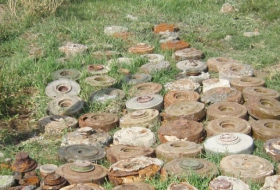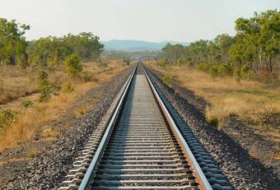A new NASA study is adding evidence to a theory that there is an enormous geothermal heat source sitting beneath the ice.
It’s called a mantle plume. It’s positioned beneath a region named Marie Byrd Land. It potentially explains a lot.
The amount of liquid water beneath an ice sheet has significant implications upon its stability.
The water acts as a lubricant. This allows glaciers to glide over bedrock easier. And the presence of this geothermal heat source could explain why the thick West Antarctic ice sheet has had such a volatile history.
In an earlier era of rapid climate change, it collapsed unexpectedly quickly.
It could do so again.
LIFE BELOW ZERO
On the surface, Antarctica has a pulse. It’s ice sheet slowly rises and falls, as though it is inhaling and exhaling.
This can be by as much as 6m at a time.
It’s because the rivers and lakes in the bedrock below periodically fill, and drain. And though the ice above may be thousands of meters thick, it rises and falls accordingly.
Some theories argue that it is the weight of the ice itself that generates enough friction to melt water at its base.
Others say the amount of water present is simply too much to be explained by such an effect.
The idea that there may be a thin point in the Earth’s crust — a mantle plume — under Antarctica was suggested some 30 years ago.
Mantle plumes are thought to come from streams of hot rock rising through the Earth’s mantle, spreading out like mushroom-shaped lakes not far under the crust.
A similar geological feature can be observed in the United States: the Yellowstone National Park supervolcano.
New seismic imaging is adding support to the idea there is one underneath Antarctica.
WEIGHT OF EVIDENCE
It’s not easy to see what’s going on below Antarctica’s ice sheet.
On average the ice is 2.6km thick. At its deepest, it is 4.7km down.
So NASA has taken all we know — from satellite and airborne observations through to every piece of applicable physics they could think of — and bundled it all together in a new simulation.
The end product of the calculations which reproduced the processes of friction, heat transport and liquid water behaviour revealed there has to be another source of energy down there.
A mantle plume fits the bill.
This mantle plume — some of which are known as supervolcanos — pumps out some 200 milliwatts of energy per square meter.
The background heating from beneath the Earth in non-geologically active areas is about 40 to 60 milliwatts.
The one under Antarctica appears to be roughly in the same league, at up to 150 milliwatts.
Any hotter and the simulations show the ice sheet melting too much to fit observations — except for one spot near the Ross Sea.
Intense flows of water have been seen here. The simulations needed up to 180 milliwatts of energy to produce similar results.
NASA seismic imaging reveals there may be a rift — a fracture in the Earth’s crust — below.
Africa’s Great Rift Valley is another example of such a geological anomaly.
EXPLOSIVE IMPLICATIONS
At the end of the last ice age, about 11,000 years ago, Antarctica’s ice sheet underwent an unexplained period of rapid — but sustained — ice loss.
It was triggered when shifts in global weather patterns and rising sea levels pushed warm water into contact with the ice sheet.
Such conditions are being observed again.
The NASA study suggests the under-ice streams and lakes facilitates the movement of this warmer water deep under the ice sheet, triggering the rapid breakup of ice flows.
More about: #Antarctica
















































